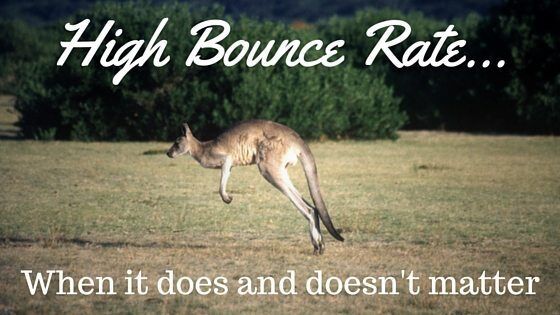
Is a high bounce rate a bad thing?
Basically, it depends.
Your website’s Bounce Rate refers to the number of people who arrive on your site and rapidly leave without navigating to any of your other pages. Each time this happens it’s counted as a bounce.
This seems like a bad thing but it isn’t always.
When does a high bounce rate not matter?
On any site where a single page may provide answers to whatever question drove the visitor. For example, any news sites, informational blogs, Yahoo answers, how to sites, recipes, Wikipedia, etc. On sites that include a high volume of this type of content, a high bounce rate is to be expected. There are a lot of sites and web pages that fall into the informational, answer based category, so if you have one of these you don’t need to be concerned if your bounce rate goes up.
When does a high bounce rate matter?
In most other cases, bounce rate could be considered a negative. It’s important to think about your visitors intent and whether or not they’ll need to visit multiple pages on your site in order to accomplish their goals (and yours). For any site selling products or services bounce rate is typically negative.
How to Improve Your Bounce Rate
- Improve conversion rate,
- Use compelling CTAs (calls to action).
- Utilize internal linking.
- Implement exit pop-ups.
- Create landing pages that satisfy users’ queries.
- Display related or popular posts.
- Run page surveys (“Is this what you were looking for?”) with users.
- Improve design (people don’t want to look at ugly websites).
- Create a site that is mobile friendly.
Want to learn more about bounce rate?
There are plenty of tips for reducing your site’s bounce rate, and most are simple no-brainers that can be easily implemented.
If you have any questions about your website and how you can improve it’s optimization or web design to benefit your goals, contact Thrive!
